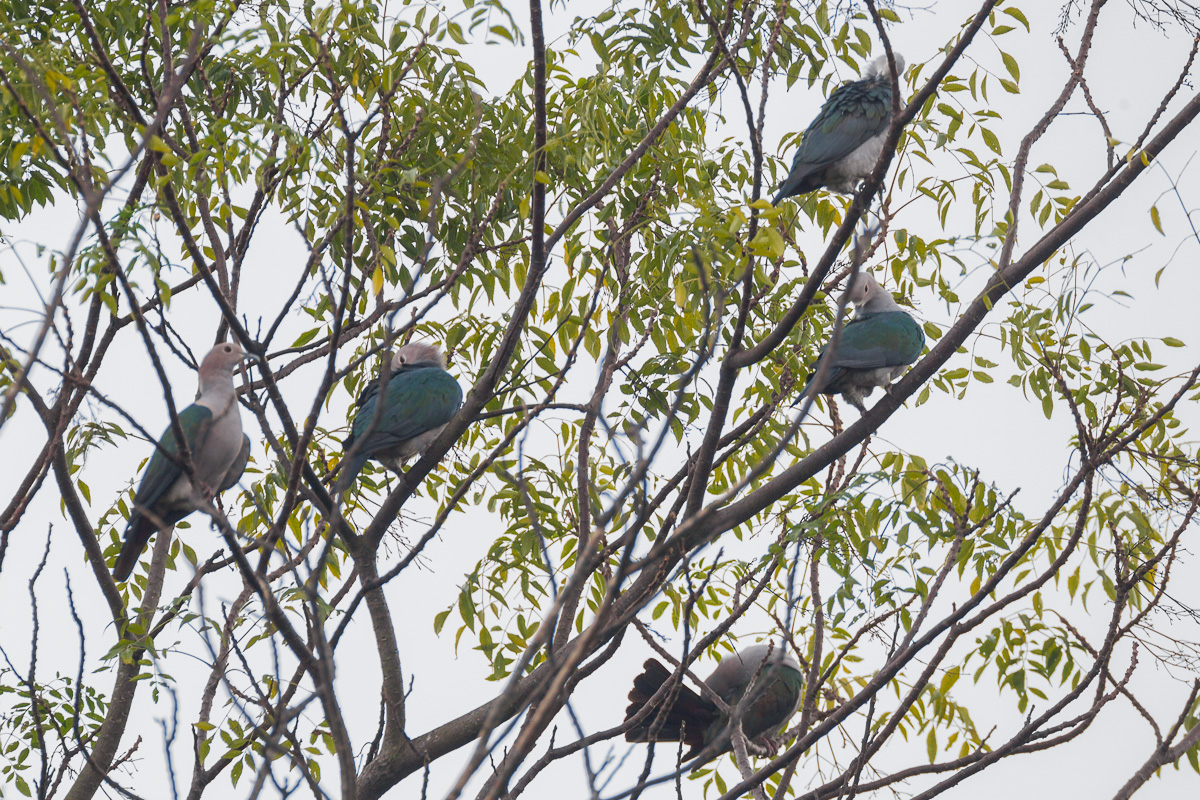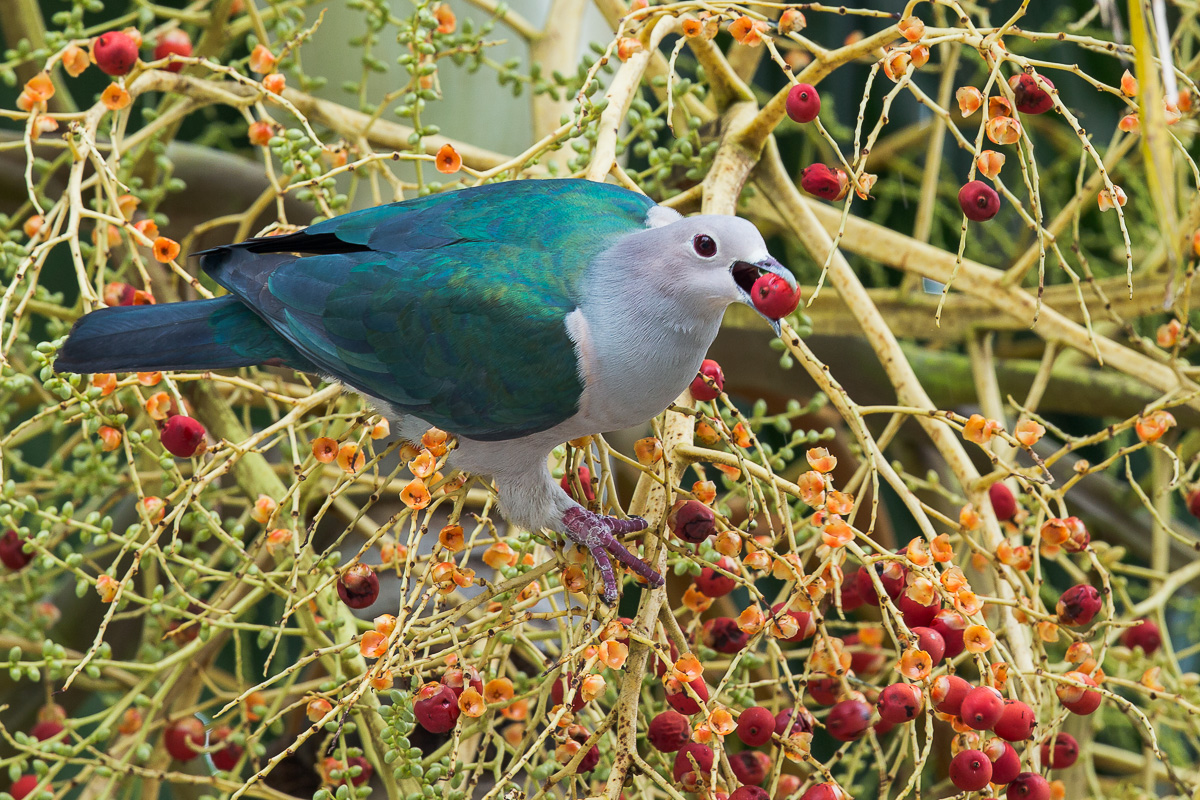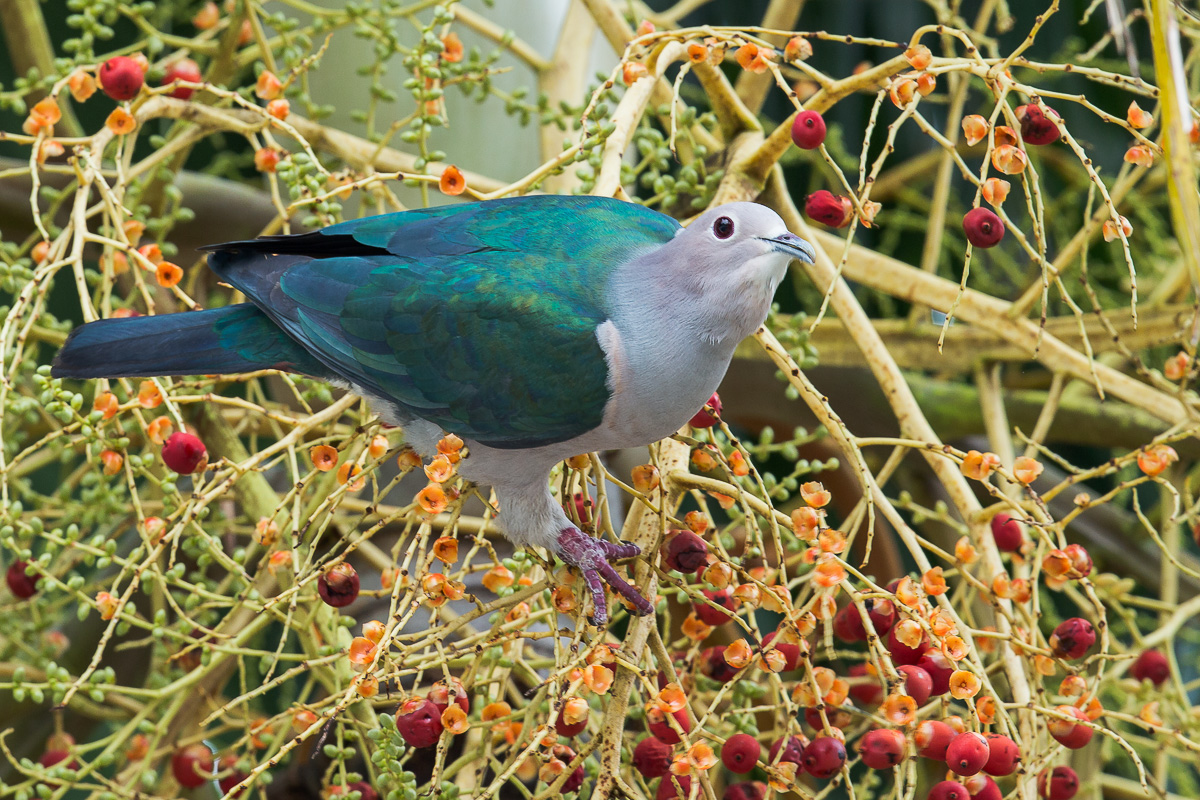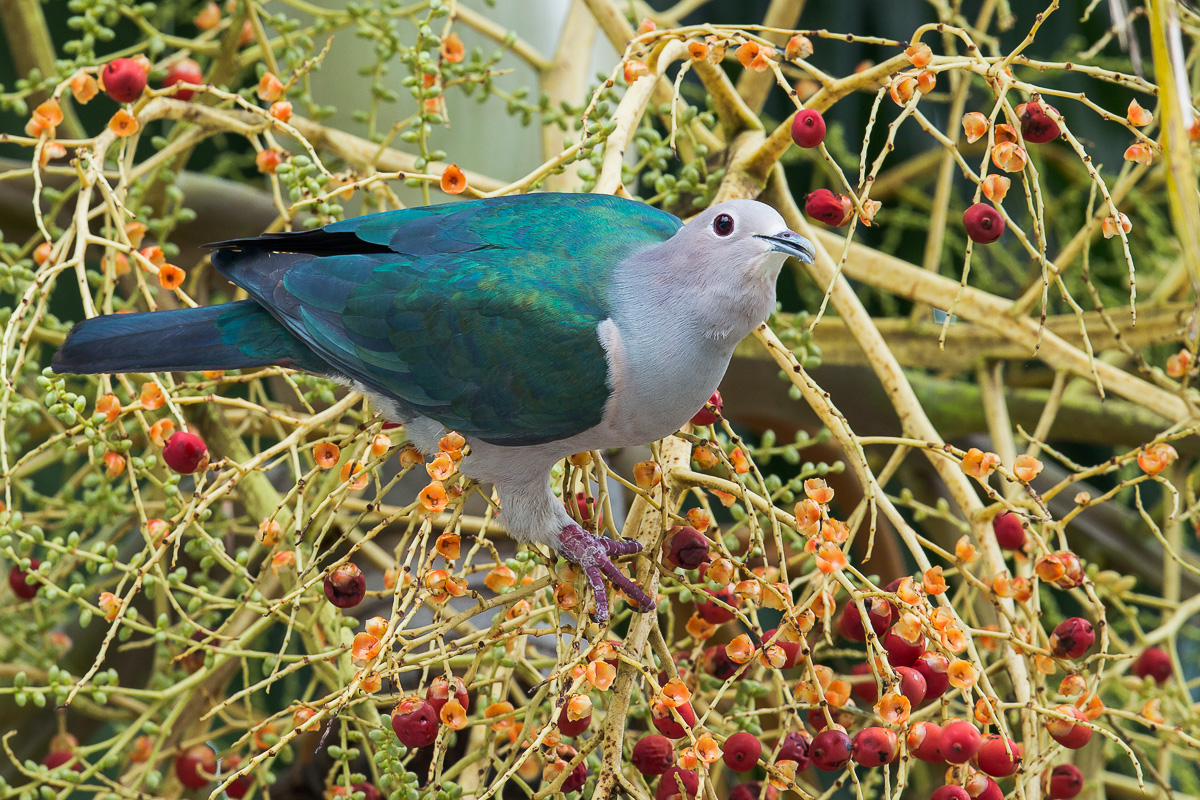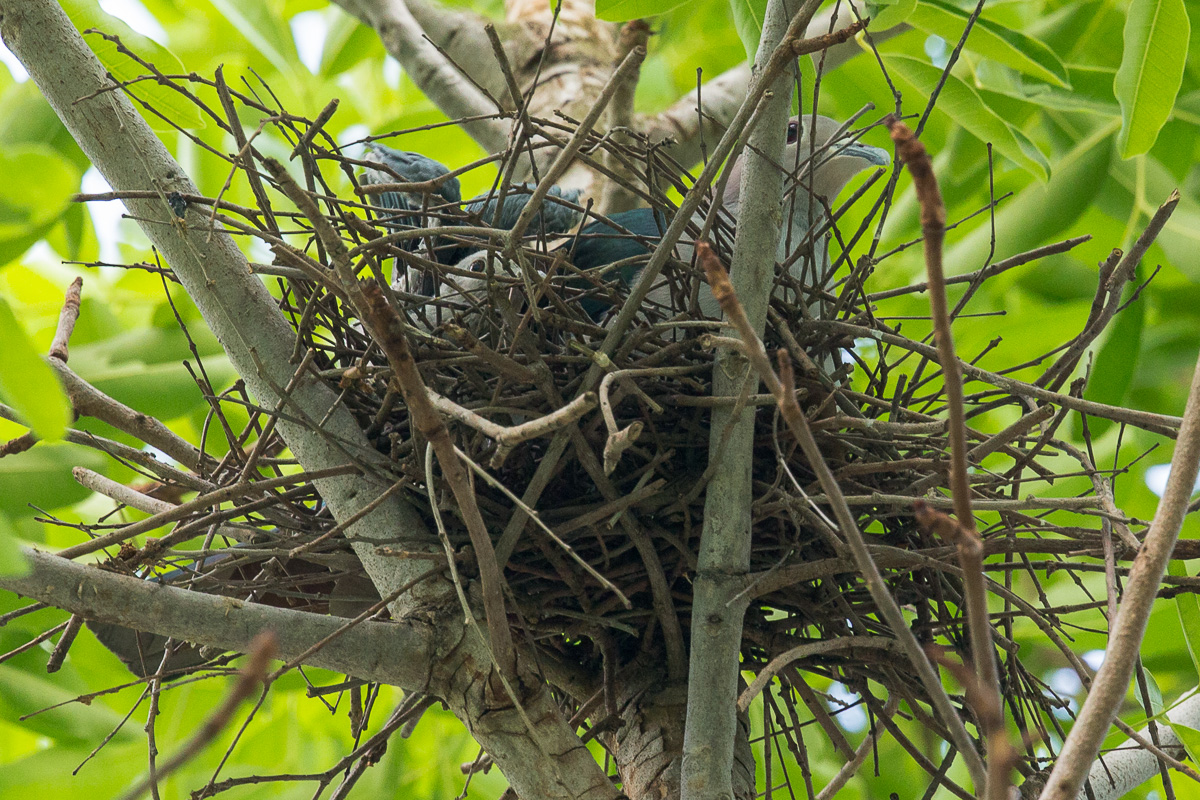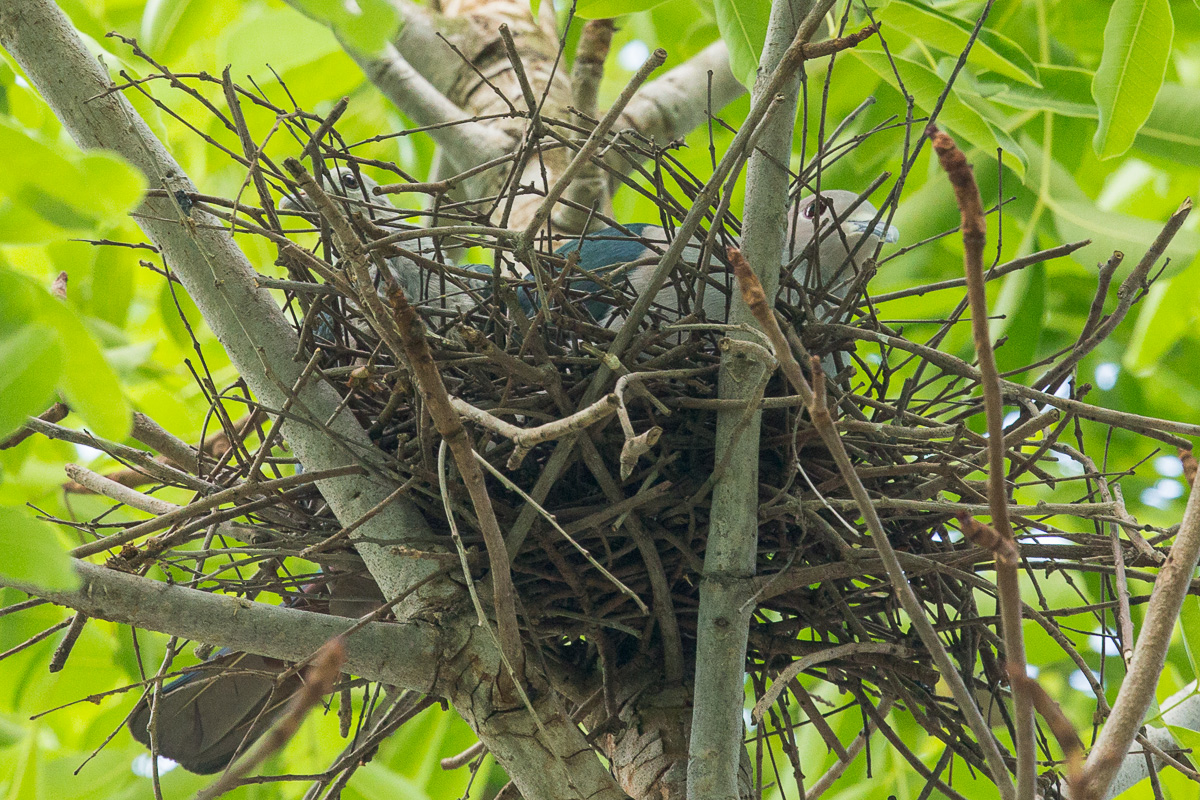The Green Imperial Pigeon (Ducula aenea) is a species of forest pigeon. It a large bird, with green-blue metallic sheen on its wings, back and tail. Its head and underparts are off-white.
Its usual range covers southern Asia from India to Indonesia
Historically, this species have been listed as a resident in small numbers at the coastal area (Gibson-Hill 1949)1
Presently in Singapore, it is listed as a non-breeding visitor with it’s usual stronghold in Pulau Tekong where sightings are more common.
In 2011, they were sighted in the adjacent Pulau Ubin between the months of June and August. Up to 5 were perched on a single tree in one afternoon.
In the mainland, there were sightings in Pasir Ris Park area in early 2012. In March 2013, the birds were seen in an industrial estate in Loyang. Ever since then, they has made regular appearances there, whenever the Macarthur Palm (Ptychosperma macarthurii) fruits in the area.
As an observation, the pigeons swallow the ripe palm fruits whole as the sequence of pictures shows.
With the knowledge of the regular presence of the pigeon in the area, the first report of nesting came in late March 2014, with a single chick hatched subsequently. By May 2014, it seems that the chick has fledged and with that the first breeding record of this species have been documented.
In the span of 3 years, this species appears to have dispersed from Pulau Tekong to Pulau Ubin and then to the mainland. And finally in an unlikely turn of events, it started breeding in an industrial estate, feeding mainly on an introduced exotic palm species.
References
1. Gibson-Hall (1949) A Checklist of the Birds of Singapore Island
